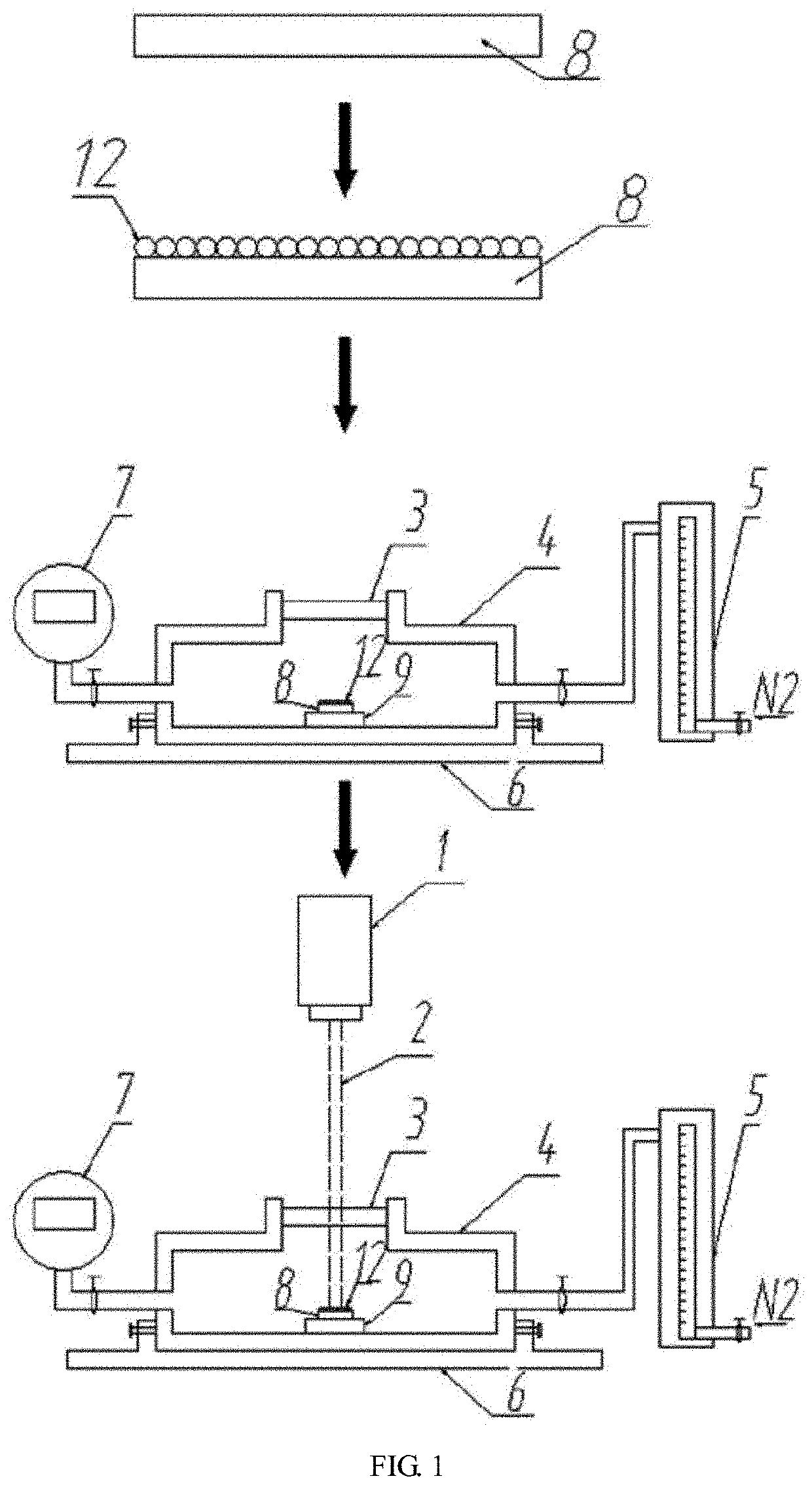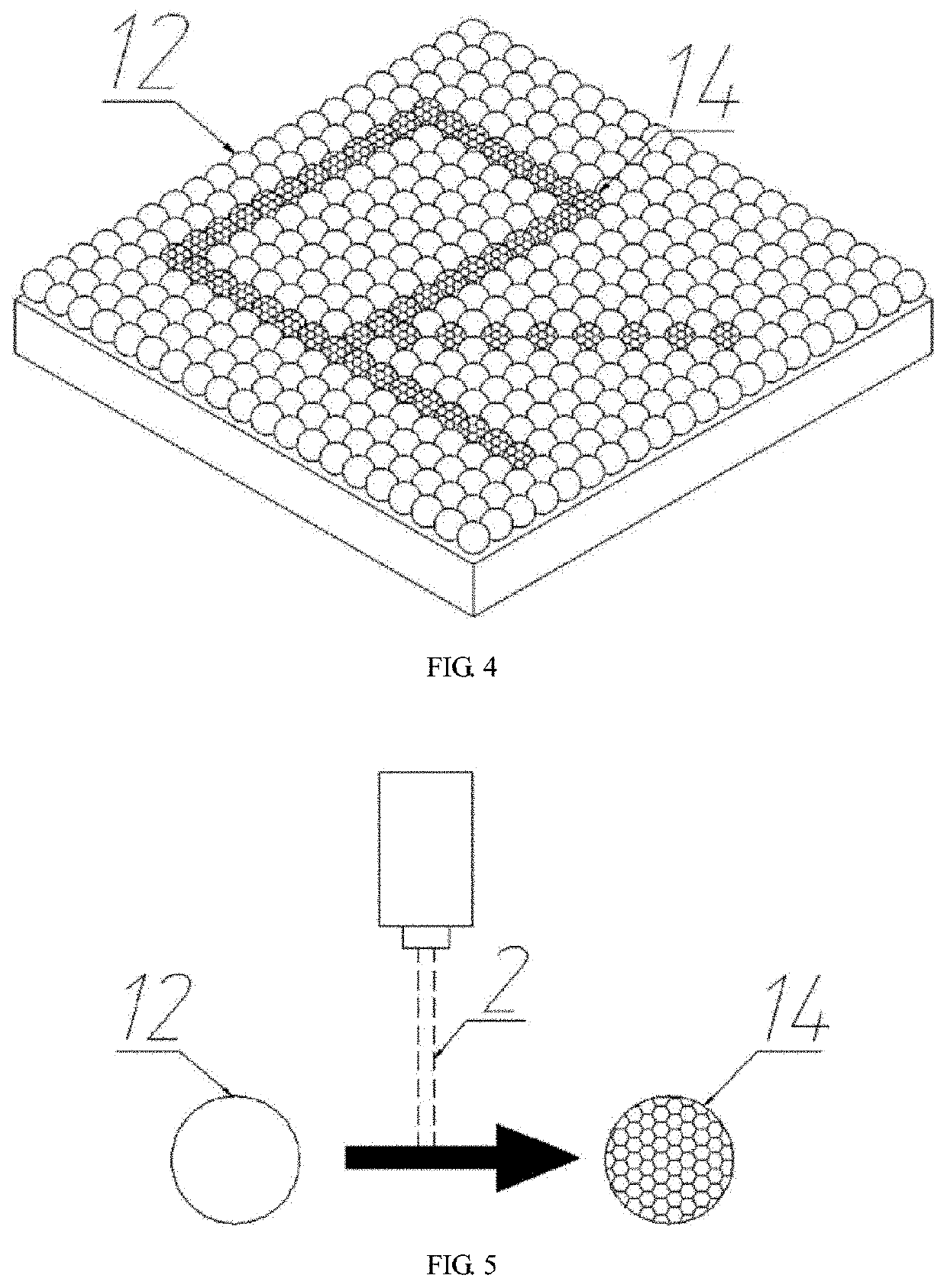Method and device for processing microstructure arrays of polystyrene-graphene nanocomposites
a nano-composites and polystyrene technology, applied in laser beam welding apparatus, coatings, manufacturing tools, etc., can solve the problems of affecting the quality of composite materials, so as to improve product quality and yield
- Summary
- Abstract
- Description
- Claims
- Application Information
AI Technical Summary
Benefits of technology
Problems solved by technology
Method used
Image
Examples
Embodiment Construction
[0041]The technical solutions of this invention will be further described below with reference to the accompanying drawings and specific embodiments.
[0042]FIGS. 1-5 schematically show a device for processing microstructure arrays of polystyrene-graphene nanocomposites, including: a laser generator 1, a vacuum chamber 4, an object stage 9, an ultraviolet filter 3 and a gas flow control unit 5.
[0043]The object stage is detachably fixed to a bottom of the vacuum chamber 4, and the vacuum chamber 4 has a passage that can be opened or closed.
[0044]The ultraviolet filter 3 is provided in the vacuum chamber 4. A laser light emitted by the laser generator 1 arrives at the object stage through the ultraviolet filter 3. The object stage is configured to place a sample to be processed.
[0045]The gas flow control unit 5 is communicated with the vacuum chamber 4 and is configured to control the flow of the gas entering the vacuum chamber 4.
[0046]The vacuum chamber 4 is fixed on the three-axis pre...
PUM
| Property | Measurement | Unit |
|---|---|---|
| size | aaaaa | aaaaa |
| flow rate | aaaaa | aaaaa |
| particle size | aaaaa | aaaaa |
Abstract
Description
Claims
Application Information
 Login to View More
Login to View More - R&D
- Intellectual Property
- Life Sciences
- Materials
- Tech Scout
- Unparalleled Data Quality
- Higher Quality Content
- 60% Fewer Hallucinations
Browse by: Latest US Patents, China's latest patents, Technical Efficacy Thesaurus, Application Domain, Technology Topic, Popular Technical Reports.
© 2025 PatSnap. All rights reserved.Legal|Privacy policy|Modern Slavery Act Transparency Statement|Sitemap|About US| Contact US: help@patsnap.com



